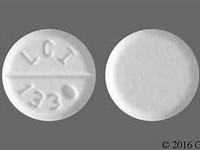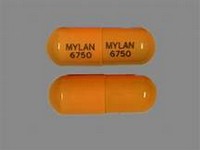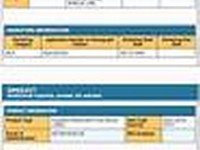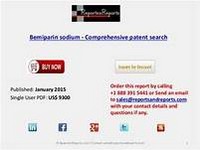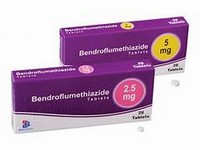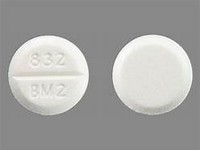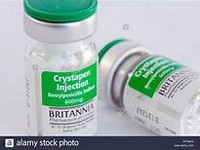streptomycin
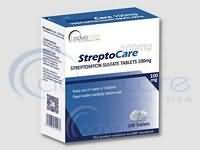
CLINICAL USE
Antibacterial agent:Tuberculosis, in combination with other drugsAdjunct to doxycycline in brucellosis Enterococcal endocarditisDOSE IN NORMAL RENAL FUNCTION
<40 years and weight >50 kg: 15 mg/kg (maximum 1 g) daily or 3 times a week>40 years and weight <50 kg: 0.5–0.75 g daily or 0.75 g 3 times a weekNon-tuberculosis infections: 1–2 g daily in divided dosesAdjust doses according to levelsPHARMACOKINETICS
DOSE IN RENAL IMPAIRMENT
GFR (mL/MIN)
DOSE IN PATIENTS UNDERGOING RENAL REPLACEMENT THERAPIES
IMPORTANT DRUG INTERACTIONS
Potentially hazardous interactions with other drugsBotulinum toxin: neuromuscular block enhancedADMINISTRATION
Reconstition
Dissolve 1 g in 2 or 3 mL water for injectionRoute
IM, IVRate of Administration
In 100 mL sodium chloride 0.9% or glucose 5% over 30 minutesComments
In patients who experience tingling sensations or dizziness during administration, increase the infusion time to 60 minutesOTHER INFORMATION
Available on a named patient basis from PfizerPeak level taken 1 hour post dose and should be in the range 15–40 mg/litre; trough level (taken pre dose) should be <5 mg/litre, or <1 mg/litre in renal impairment or those over 50 years of ageMay be less nephrotoxic than other aminoglycosidesPD peritonitis dose is 20–40 mg/litre/day Risk of side effects increases after a cumulative dose of 100 gstreptomycin (unlicensed product).StRePtOMYCIN (UNLICeNSeD PRODUCt) 687A study in 4 patients used IV streptomycin at a dose of 7–15 mg/kg over 30–60 minutes without any problems, although IV administration did increase risk of toxicityDue to the efficacy of twice weekly therapy, it is recommended that tuberculosis patients with severe renal impairment be given a dose of 750 mg 2–3 times a week for the first 2 months of treatment; trough levels should not exceed 4 mg/L. (Ellard GA. Cerebrospinal fluid drug concentrations and the treatment of tuberculous meningitis. Am Rev Respir Dis. 1993; 148: 650–5.)Peak serum concentrations in individuals with renal impairment should not exceed 20–25 mcg/mLRisk of severe neurotoxicity, irreversible vestibular damage and cochlear reactions is greatly increased in patients with impaired renal function; optic nerve dysfunction, peripheral neuritis, arachnoiditis and encephalopathy may also occur.
See how to identify renal failure stages according to GFR calculation
See how to diagnose irreversible renal disease
Home
